Manaslu Circuit Trekking
Authentic and wild: conquer Manaslu Base Camp and overlook Tibet

Departure
Kathmandu

Trekking season
Apr – May
Oct -Nov

Duration
16 days

Difficulty
Average

Daily km
10-15 km

Max Altitude
Larkya La Pass
5,135 mt
Day 01: Arrival in Kathmandu, transfer to the hotel.
Day 02: Jeep transfer from Kathmandu to Machhakhola
Day 03: Trekking from Machhakhola to Jagat (6-7 hours)
Day 04: trekking from Jagat to Deng (7-8 hours)
Day 05: Trekking from Deng to Namrung (7-8 hours)
Day 06: Trekking from Namrung to Shyala (5-6 hours)
Day 07: Trekking from Shyala to Pungyen Gumba Monastery and back to Shyala (5-6 hours)
Day 08: Trekking from Shyala to Manaslu Base Camp and back to Shyala (5-6 hours)
Day 09: Trekking from Shaya to Samdo (3 hours)
Day 10: rekking from Samdo to the Tibetan border (Layung La Pass) and return to Samdo (7-8 hours)
Giorno 11: trekking da Samdo a Dharamsala (3-4 ore)
Day 12: Trekking from Dharamsala to Bimthang. via the Larkya La Pass (5,135 m) (8-9 hours)
Day 13: Trekking from Bimthang to Gho (4-5 hours)
Day 14: Trekking from Gho to Dharapani (2-3 hours) and jeep transfer to Besisahar (4-5 hours)
Day 15: Jeep transfer from Besisahar to Kathmandu
Day 16: Reserve day or visit to Kathmandu
- Transfers: Arrival and departure transfers from Kathmandu International Airport.
- Accommodation in Kathmandu: 3 nights in a 3-star hotel in a double room (single on request) with breakfast (with vegetarian and vegan options).
- transfers to Besisahar and Machhakhola: round trip by bus or jeep
- Accommodation during the trek: Overnight stays in family-run lodges.
- Breakfast: with vegetarian and vegan options, including tea and coffee.
- Drinking water: 2 litres of boiled water in flasks or thermos flasks per day per member.
- Guide: Certified local guide with excellent knowledge of Italian and English.
- Porters: 1 porter for every 2 excursionists for the transport of personal luggage during the trek, maximum 13 kg per participant.
- Porters: 1 porter for every 2 excursionists for the transport of personal luggage during the trek, maximum 13 kg per participant.
- Permits: Permits required for trekking to Manaslu Circuit, including Manaslu Conservation Area (MCAP) and Annapurna Conservation Area (ACAP).
- Insurance: Insurance for all Nepalese personnel involved.
- Medical Kit: First Aid Medical Kit
- International flight to and from Kathmandu
- Entry VISA for Nepal: $50 for 30 days
- Additional overnight stays in Kathmandu: in case of early arrival or late departure, or in case of early return from trekking (for any reason) compared to the planned itinerary.
- Single room in Kathmandu: You can request a quote for the single room with an additional charge of approximately $25 per night.
- Lunches and dinners in Kathmandu: you can request a quote for full board
- Lunches and dinners during the trek: You can request a quote for full board with an additional charge of approximately $30 per day.
- Insurance: Travel and high altitude insurance, accident, medical, emergency evacuation.
- Personal Expenses: Nepalese phone SIM card, soft drinks, alcoholic beverages, personal equipment, souvenirs and miscellaneous purchases.
- Guides and porters tips
- Other expenses: Any item not listed in the section ‘What is included in the price’.
What landscapes await you at the Himalayan trek to Manaslu Base Camp?
Our experience at your service to accompany you to the Manaslu Circuit Trekking
- Mountain boots or hiking boots: robust and comfortable for rough terrain.
- Mountain socks: enough for a daily change.
- Base layers in merino wool or synthetics: including jersey and long trousers.
- Breathable intermediate jersey: for additional thermal insulation.
- Technical underwear: suitable for keeping the body dry.
- Waterproof shell with hood: for protection against wind and light precipitation.
- Waterproof trouser covers: breathable and water-resistant.
- Hooded down jacket: high thermal capacity for extreme cold.
- Padded technical trousers: for complete protection against rain and snow.
- Thermal jersey and underpants: comfortable for movement.
- Thermal jersey and underpants: comfortable for movement.
- Gloves with insulating liner: for colder and windier conditions.
- Winter hat: made of wool or synthetic material.
- Sun hat: to protect against intense sun.
- Sun cream: grade 50 or higher
- Sunglasses with UV protection: indispensable for strong solar radiation at high altitudes.
- Hiking backpack: waterproof and light, suitable for carrying the necessary equipment (20-30 lt recommended).
- Sleeping bag: rated for extremely low temperatures, down to -20°C or lower.
- Headlamp
- Universal plug adapter: for charging your mobile phone, camera, etc.
- Power bank: no electricity is guaranteed in high-altitude lodges
- Large mountain water bottle and thermos flask: at least 2 liters in total
* Don’t worry if you miss something! It is possible to buy or rent any missing equipment directly in Kathmandu.
Richiedi maggiori informazioni
F.A.Q. (Frequently Asked Questions)
Adult hikers in good health and with a spirit of adaptation.
For trekking training in the Himalayas, one gradually prepares oneself to walk 6-8 hours in the mountains on routes of 15-20 km, with altitude differences of +1000/1200 m.
In addition, medium/intensive cardio training is recommended.
The average daily elevation gain is about +500 m, over a distance of about 15 km with 5 to 7 hours of walking and stops for lunch, visits and recovery.
Acclimatization to altitude is managed during the trek with scheduled stops at predetermined elevations, incorporating excursions with 500-700 meters of elevation gain and subsequent return to the lodge for overnight stays. This gradual approach helps the body adjust to the changes in altitude and prevents the onset of acute mountain sickness (AMS), which can cause symptoms such as headaches, nausea, vomiting, fatigue, dizziness, and difficulty sleeping.
The paths to be followed do not present technical difficulties and are well beaten, sometimes on stone steps
In Kathmandu, a special duffel bag will be provided for carrying luggage during the trek with carriers/yaks/ponies up to 13 kg
Each participant will only bring a small backpack for whatever he or she considers useful to have during the day, such as water bottles, books, personal documents, basic medicines, sunglasses sun cream and a change of clothes. Access to the main luggage is guaranteed at the end of the day once the daily destination has been reached
Yes, the guide will take care of trekking permits for entry into parks and protected areas
If necessary, it is also possible to rent locally for $3-5 per day (comfort temperature -20 degrees).
Before the trek begins, it is possible to leave some luggage at the hotel, which can be retrieved on the way back.
In addition to medicines for specific personal needs, the following are recommended: diamox to mitigate the effects of altitude sickness, antipyretic, anti-inflammatory, intestinal disinfectant, antiseptic cream.
There is no compulsory vaccination in Nepal, but anti-hepatitis, tetanus booster and tetanus booster may be recommended, to be checked with your doctor.
Typically, bottled water is available at all lodges, and there are also points of sale along the trekking routes. Tap water is strongly discouraged unless you use a purifier like “Micropur” or similar. At Himalaya Exped, we are committed to providing you with 2 liters of potable water every morning for the entire duration of the trek.
The national dish is Dal Bhat, which is a type of lentil soup served with boiled rice and accompanied by various vegetables. It is usually served in generous portions, and a second helping is often offered.
You can also find pasta prepared in various ways, soups, noodles with vegetables, and eggs cooked in different styles. However, meat, whether yak or chicken, is not recommended due to its precarious preservation at high altitudes. Garlic is abundant in almost all dishes; if you’re not a fan, it’s best to request that it not be added.
Energy bars and water-soluble supplements are always recommended. If you have chosen full board, you will receive an energy bar every morning at breakfast.
Typically, the lodges are quite basic, though you will usually sleep in two-person rooms with a blanket or duvet provided. It is advisable to bring a good sleeping bag, which you can rent in Kathmandu upon request. Night temperatures can drop significantly, and the accommodations are generally not heated; often, a stove is lit in the dining area, but it is rarely sufficient unless you stay very close to it. Our guides will always strive to book the best available option and, where possible, accommodations with an en-suite bathroom.
Temperatures vary significantly in Kathmandu, where you might experience warm days and cool nights. At higher altitudes, temperatures can drop well below freezing, depending on the season. In late autumn, it generally gets quite cold. At Everest Base Camp (EBC), temperatures could be as low as -10°C or lower, and even during the day, in the absence of sunshine, it remains cold. However, when the sun is out, it’s not uncommon to walk in a T-shirt.







